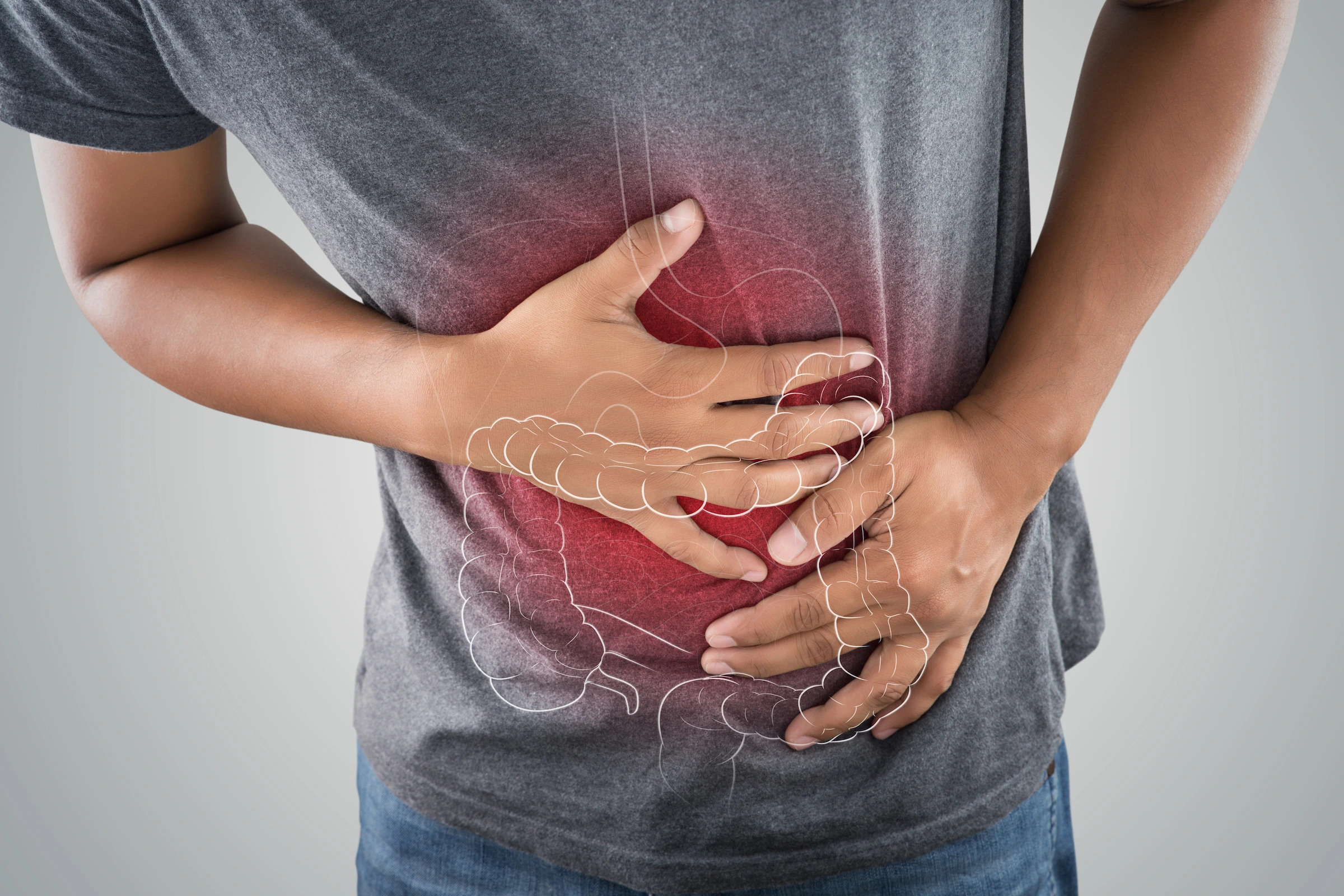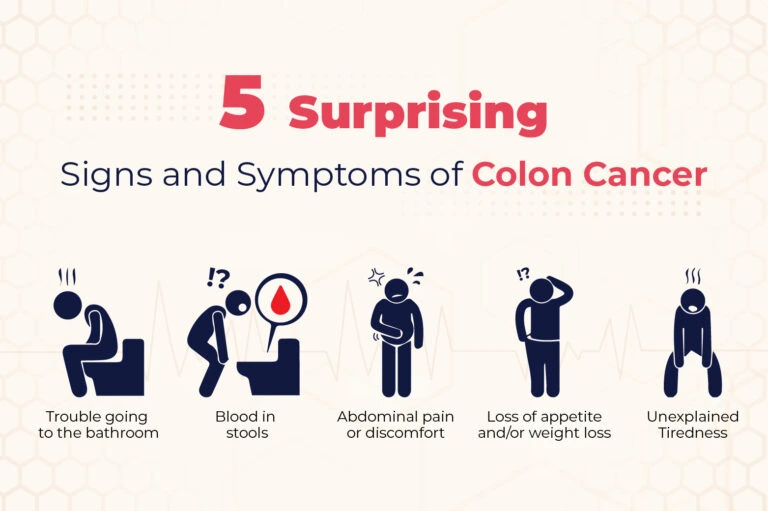
Colon cancer is the second leading cause of cancer death in the United States. It often develops silently, and pain is typically a late symptom. This makes early detection and screening even more important. As the disease progresses, it can cause pain in specific parts of the body. Understanding colon cancer pain areas and how to manage those symptoms is crucial for patients and their care teams.
In this article, we’ll cover:
- Where colon cancer causes pain
- How colon cancer pain symptoms may appear
- Causes and risk factors for colon cancer
- Changes to screening guidelines
- Pain from metastases
- Options for managing colon cancer pain
Where Colon Cancer Causes Pain
Colon cancer pain isn’t always obvious at first. Early stages may not cause any discomfort. As the tumor grows or spreads, pain can develop in several regions:
- Lower abdomen: Tumors in the colon often cause cramping or aching here.
- Back and flanks: If cancer presses on nerves or organs, pain may develop in the back or sides.
- Pelvic area: Tumors in the sigmoid colon or rectum can cause low pelvic pain.
- Coccyx and buttocks: Pain in the tailbone or buttocks can sometimes signal advanced colon or rectal cancer. Read more in our article on when coccyx and buttock pain may be cancer symptoms.
As cancer spreads, new pain areas may appear—especially when it involves the bones, liver, or lymph nodes.

What Are Colon Cancer Pain Symptoms?
Pain from colon cancer can present in different ways. Common colon cancer pain symptoms include:
- Dull abdominal aches that come and go
- Sharp cramps after eating
- Pain or pressure during bowel movements
- Pain radiating to the back or down the legs
- Tailbone pain without trauma
- Deep bone pain in advanced cases
Colon cancer may also cause:
- Changes in bowel habits
- Rectal bleeding
- Fatigue
- Unexplained weight loss
Causes and Risk Factors of Colon Cancer
Colon cancer often starts as a polyp—an abnormal growth on the colon lining. Over time, some polyps become cancerous. Risk factors include:
- Age over 45
- Family history of colon cancer or polyps
- Inflammatory bowel disease (e.g., Crohn’s, ulcerative colitis)
- Low-fiber, high red or processed meat diet
- Smoking and alcohol use
- Obesity
- Type 2 diabetes
While not all risks are avoidable, early detection can dramatically improve outcomes.
Why the Screening Age for Colon Cancer Has Changed
Colon cancer is now being diagnosed more often in younger adults. As a result, the U.S. Preventive Services Task Force lowered the screening age from 50 to 45.
Screening options include:
- Colonoscopy (the gold standard)
- Stool-based tests like FIT or Cologuard
- CT colonography
Screening at 45 allows earlier detection and prevention through removal of precancerous polyps.
Pain From Colon Cancer Metastases
As colon cancer spreads (metastasizes), it may reach the:
- Liver
- Lungs
- Peritoneum (abdominal lining)
- Bones, especially spine and pelvis
Metastatic pain can be severe and persistent. Bone metastases cause deep, aching pain that may worsen at night. Spinal involvement can lead to nerve pain, weakness, or fractures. Liver metastases often cause right upper abdominal pain, especially when the liver capsule is stretched. Lung metastases may result in chest pain, coughing, or pain with breathing.
Options for Managing Colon Cancer Pain
At Red Butte Pain Solutions, we create personalized pain management plans based on whether the pain is localized or widespread.
Medications
- NSAIDs or acetaminophen for mild discomfort
- Opioids for moderate to severe pain
- Neuropathic agents like gabapentin or duloxetine
- Steroids to reduce tumor-related inflammation
These can be used alone or in combination.
Superior Hypogastric Plexus Neurolysis
This nerve block targets pelvic pain and reduces the need for opioids. It is ideal for:
- Tumors in the sigmoid colon or rectum
- Pelvic nerve invasion
- Radiation-related pelvic pain
Bone Tumor Ablation with Kyphoplasty or Vertebroplasty
When colon cancer spreads to the spine, fractures can occur. These outpatient procedures stabilize the spine and relieve pain:
- Kyphoplasty: A balloon is inserted and filled with cement.
- Vertebroplasty: Cement is injected directly into the fractured vertebra.
Ganglion Impar Neurolysis
This treatment is useful for rectal, perineal, or tailbone pain. The ganglion impar is a nerve cluster near the coccyx. Blocking these nerves helps with:
- Rectal cancer pain
- Pain in the perineal region
- Tumor-related coccyx discomfort
Intrathecal Pump / Targeted Drug Delivery
An intrathecal pump delivers medication directly into the spinal fluid. This is ideal for:
- Widespread or resistant cancer pain
- Intolerance to oral opioids
- Reducing side effects like drowsiness or constipation
The device is implanted under the skin and refilled periodically.
Matching Treatment to Pain Location
The most effective pain treatment depends on where colon cancer is causing symptoms:
- Pelvic pain: Superior hypogastric plexus neurolysis
- Spinal pain from bone metastases: Kyphoplasty or vertebroplasty
- Rectal or perineal pain: Ganglion impar neurolysis
- Widespread or medication-resistant pain: Intrathecal pump therapy
Personalized treatment ensures patients get targeted, lasting relief.
When Should You Be Concerned About Colon Cancer Pain?
If you’re experiencing lower abdominal, pelvic, spinal, or tailbone pain—especially with bowel changes or weight loss—get evaluated promptly.
Tailbone and buttock pain are often overlooked but may indicate advanced cancer. Read our article on coccyx and buttock pain as cancer symptoms to learn more.
You Don’t Have to Live with Colon Cancer Pain
Effective colon cancer pain treatment can restore comfort, improve function, and enhance your quality of life.
Relief is possible. Whether through medications or advanced procedures—such as superior hypogastric plexus neurolysis, bone tumor ablation, ganglion of impar neurolysis, or intrathecal pump therapy—our team at Red Butte Pain Solutions is here to help.
📞 Call us today at 602-633-4334
🔗 Schedule now to begin your journey toward relief.
We proudly serve Chandler, Ahwatukee, Laveen, Sun Lakes, Casa Grande, Maricopa, Gilbert, Mesa, Tempe, and South Phoenix..
